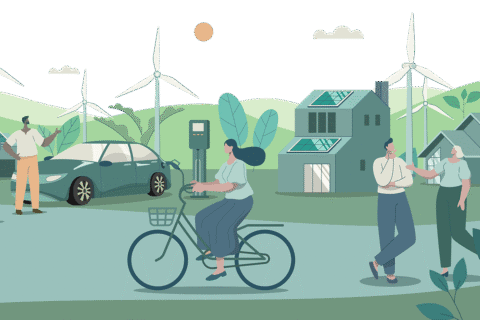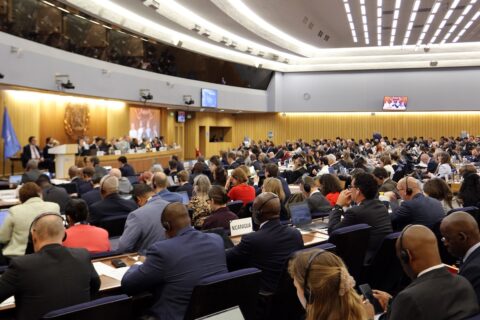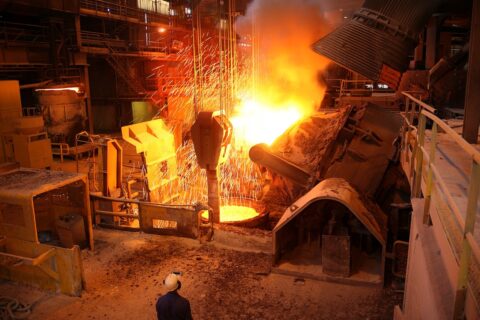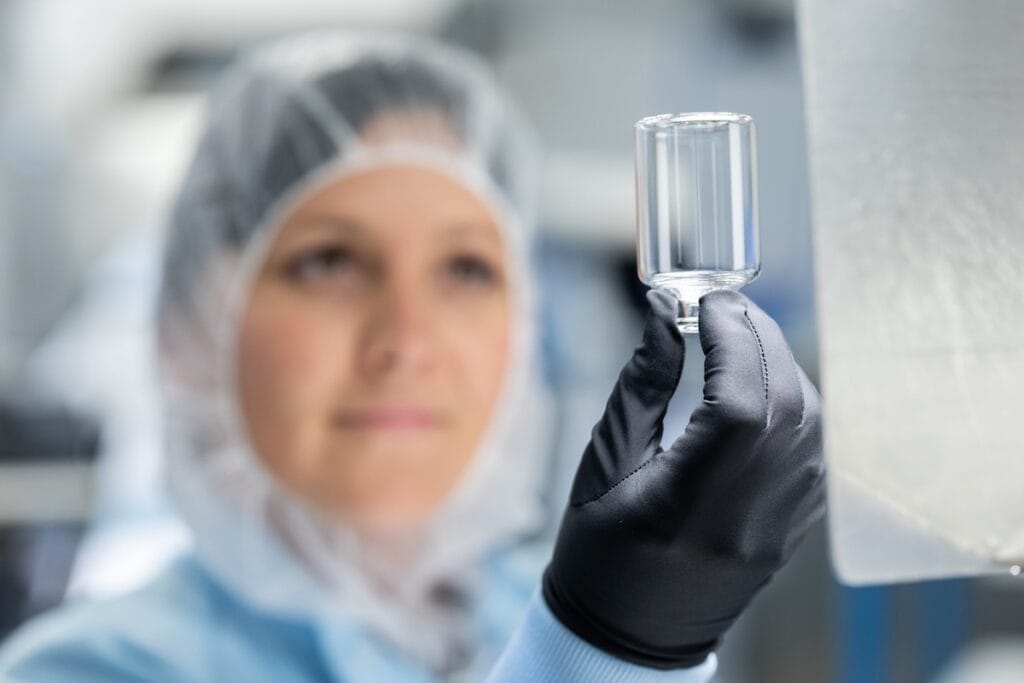
In a first for the specialty glass industry, a new independently certified guideline for calculating the carbon footprint of a product has been developed to offer greater transparency around greenhouse gas emissions.
International technology group Schott is the first specialty glass manufacturer to present a certified Guideline for calculating a Product Carbon Footprint (PCF). Based on greenhouse gas emissions (GHGs), this product-specific sustainability assessment provides a quantified statement of associated climate impact.
As these assessments are increasingly becoming the focus of the company’s climate strategies, the aim is to help customers choose low-emission products and thus advance their own decarbonisation goals.
Cradle-to-gate approach to decarbonisation
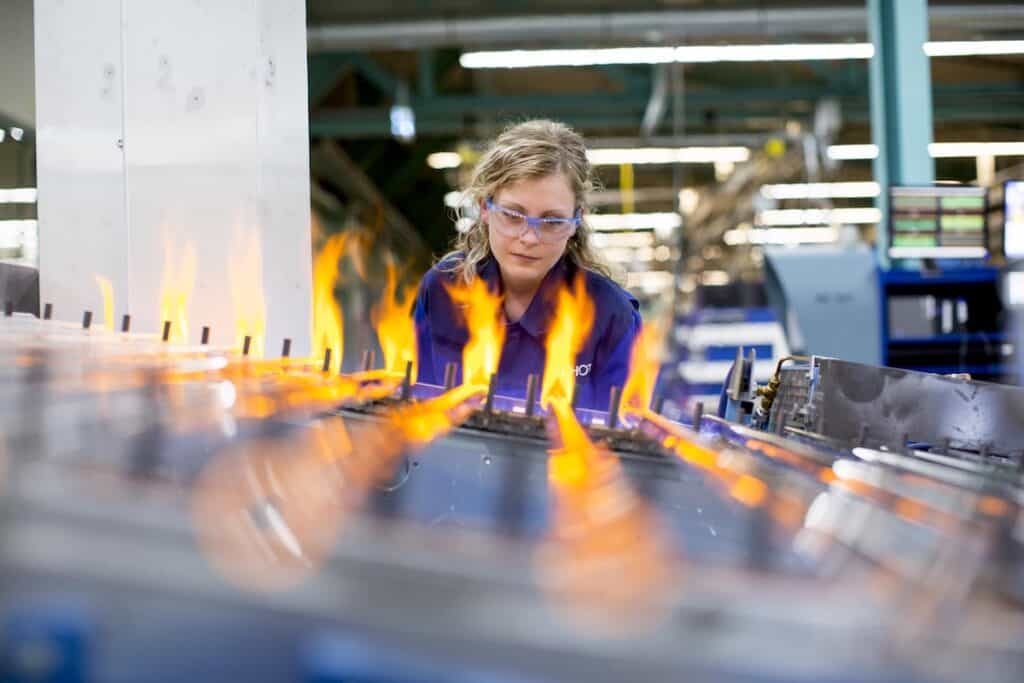
The PCF can help customers prioritise and make purchasing and procurement choices with lower climate impact by providing information on the quantities of GHGs that arise during the lifecycle of a product.
Figures calculated according to the certified method determine where there is still room for improvement at product level. Together with its customers, Schott can then develop new CO2-reduced solutions.
The PCF Guideline takes into account the product life phase “from the cradle to the factory gate”. This cradle-to-gate approach covers GHGs arising from the extraction of raw materials, plus all manufacturing processes, right through to the finished and packaged product on the Schott premises.
Working alongside customers to develop lower-CO2 products and achieve decarbonisation targets is the way forward, says Marius Amschler, Product Manager and Sustainability Expert for the Business Unit Tubing:
“Thanks to our certified PCF Guideline, we can now calculate reliable CO2 data for first products and reliably determine Scope 3 emissions together with our customers. We are thus contributing to the development of more sustainable, transparent value chains and taking our climate strategy an important step forward.“
This collaborative approach is already generating positive feedback and signs of demand, adds Amschler:
“Several customers have expressed a strong interest in medical glass packaging with a PCF value.”
Set industry standards for specialty glass together
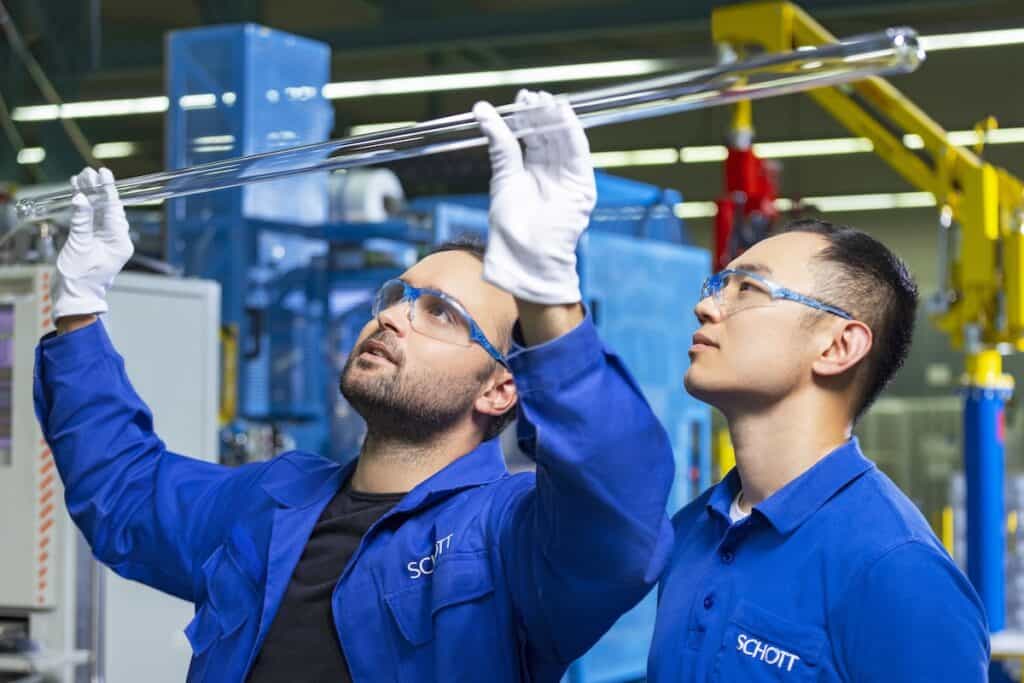
Calculating the CO2 values for the Group’s many different specialty glasses, glass-ceramics and other products is however a challenging task, which is why Schott is proceeding step by step.
It will therefore take time for the business units with the widest range of products to determine reliable CO2 data according to the PCF Guideline. Since the various product offerings are different, communication with customers from each business unit will necessarily follow a separate schedule.
The lack of any existing standards of relevance for the specialty glass industry made the task of developing the PCF Guideline especially difficult. This really is an example of pioneering work within a sector.
Experts at Schott have not only had to take many different products and their manufacturing processes into account, but determine emission values for components and raw materials from upstream suppliers, too.
More broadly, the Schott PCF Guideline is aligned with current, internationally recognised standards and protocols. Its requirements follow the ISO 14067 Standard for carbon footprinting of products, as well as the Greenhouse Gas (GHG) Protocol for accounting for emissions, plus the overarching PCF Guideline for the chemical industry from TfS (Together for Sustainability).
An interdisciplinary group from various departments worked together at Schott to develop the PCF, with support from sustainability specialists at a management consultancy.
Providing third-party validation, independent testing company GUTCert is responsible for the certification.
Looking ahead, the aspiration is for ongoing engagement sector-wide, says Corporate Sustainability Manager Anja Schlosser, who coordinates the PCF team of experts at Schott:
“Our guideline provides a standardised and transparent calculation method for the first time ever. Based on our method, we can now identify levers for avoiding greenhouse gas emissions much more easily.
“It helps set the appropriate standards in the specialty glass industry — and we would like to engage in an exchange with other players in this area to jointly promote sustainable standards in our industry.”
Goal of climate-neutral production by 2030
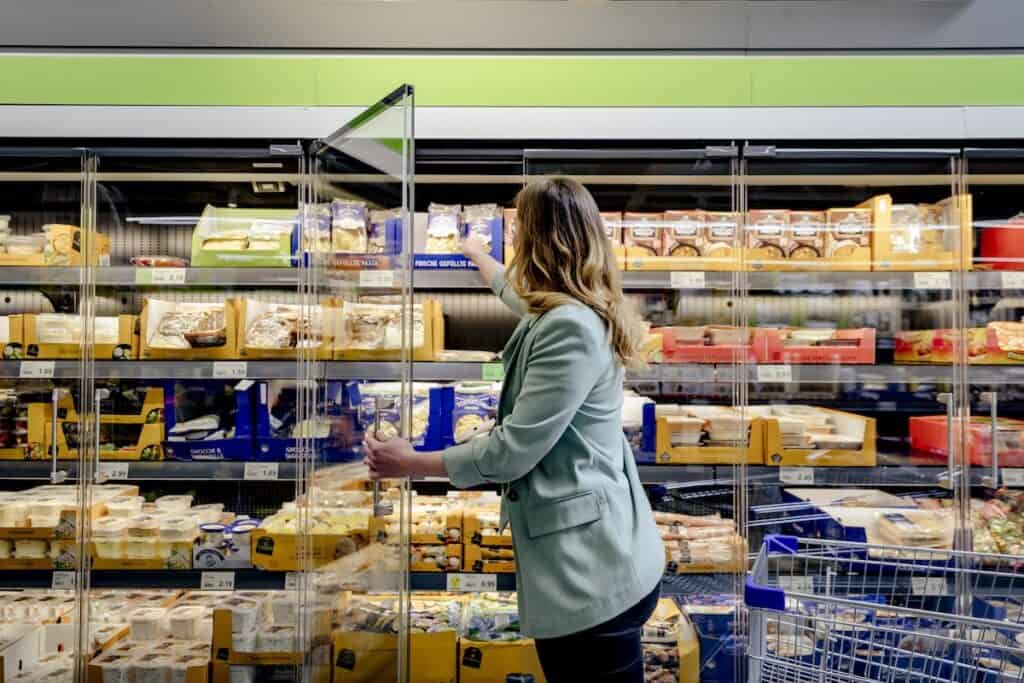
With some 17,400 employees in over 30 countries, Schott produces high-quality components and advanced materials, including specialty glass, glass-ceramics, and polymers.
Many of these products have high-tech applications, such as flexible glass in foldable smartphones, glass-ceramic mirror substrates in the world’s largest telescopes, and laser glass in nuclear fusion.
Generating €2.8 billion in sales last fiscal year, Schott partners with industries such as healthcare, home appliances, consumer electronics, semiconductors, optics, astronomy, energy, and aerospace.
Founded in 1884 and headquartered in Mainz, Germany, the company belongs to the Carl Zeiss Foundation, which uses its dividends to promote science. Schott is pursuing a goal of climate-neutral production by 2030.
Further Reading:
- More about Schott; its new PCF Guideline (Executive Summary); and the Carl Zeiss Foundation;
- More about the wider ISO 14067 Standard; and the global Greenhouse Gas (GHG) Protocol;
- More on the overarching PCF Guideline for the chemical industry from TfS (Together for Sustainability);
- Also on SustMeme, First guarantee for traceability of green hydrogen;
- Also on SustMeme, Carbon accounting hits right note in the studio;
- Also on SustMeme, Ecolabel first for solar industry manufacturing;
- Also on SustMeme, Calculating true carbon footprint of the World Cup;
- Also on SustMeme, World’s most sustainable glass bottle created in biofuel trial.
Check out the full archive of stories on the SustMeme Business & Finance Channel, now available to Sponsor.



